Abstract
These studies extend the recent observation that cefazolin is inactivated to a greater extent than cephaloridine by some strains of penicillinase-producing Staphylococcus aureus, whereas cephalothin undergoes little if any inactivation. In Mueller-Hinton broth (inoculum, 3 × 106) 100 recently isolated strains had minimal inhibitory concentrations (MICs) ≤ 2 μg/ml for cephalothin and cephaloridine, whereas in Trypticase soy broth (TSB) 50% had MICs > 2 μg/ml and 10% (designated “resistant” strains) were >8 μg/ml for cephaloridine but remained ≤2 μg/ml for cephalothin. A large inoculum (3 × 107) of strains with high MICs in TSB almost completely inactivated 50 μg of cefazolin per ml in 6 h, with progressively less inactivation, in the following order, of cephaloridine, cephalexin, cephradine, cephapirin, and cefamandole; cefoxitin and cephalothin underwent little if any inactivation. The greater inactivation in TSB than in Mueller-Hinton broth appeared to be due to a greater production of β-lactamases by each colony-forming unit, since the inoculum size in the two broths was not significantly different. In contrast, “susceptible” strains (MICs ≤ 2 μg/ml in both broths) inactivated cephaloridine more than cefazolin, and equal amounts of powdered bacterial extracts confirmed the fact that qualitatively different β-lactamases were produced by the susceptible and resistant strains. Disk diffusion tests were unreliable in separating the two groups of staphylococci. The clinical significance of inactivation by strains with high MICs is not known but, unless susceptibility can be clearly established, cephalothin appears preferable for severe staphylococcal infections, since it undergoes little if any inactivation by any strains of staphylococci.
Full text
PDF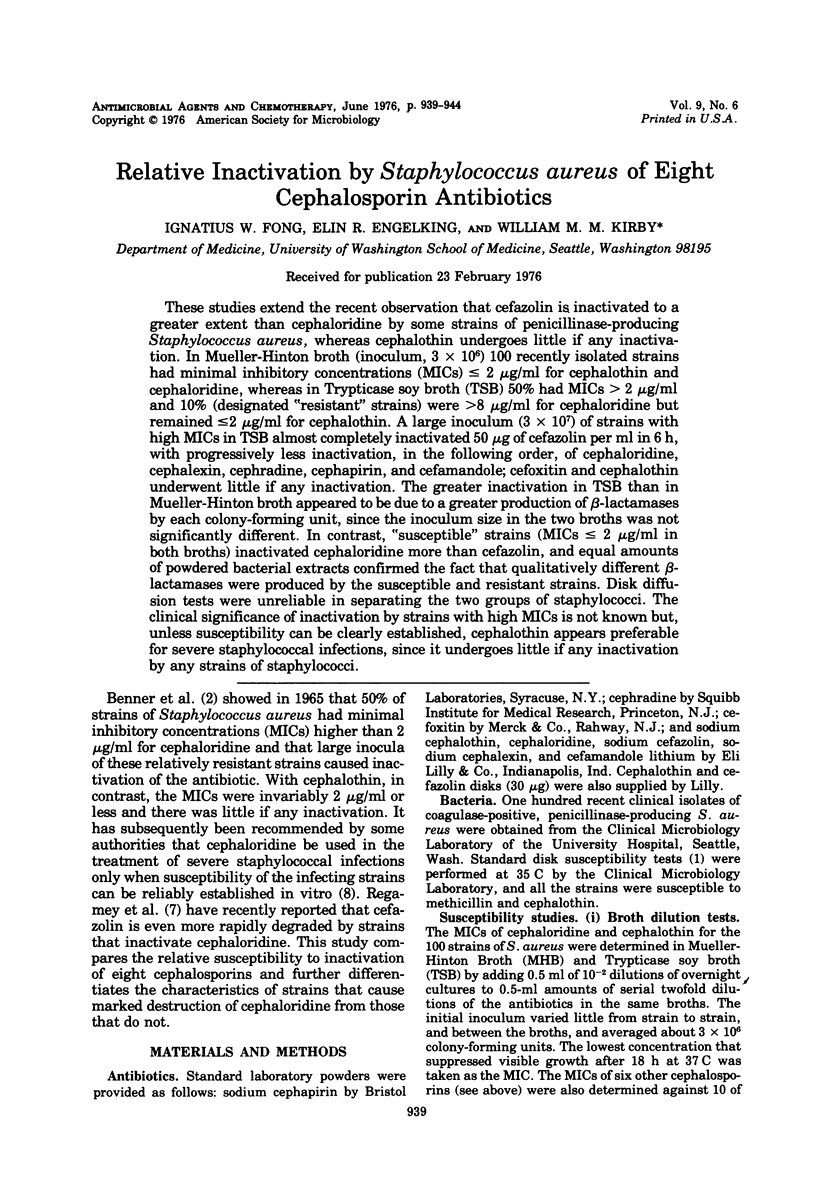
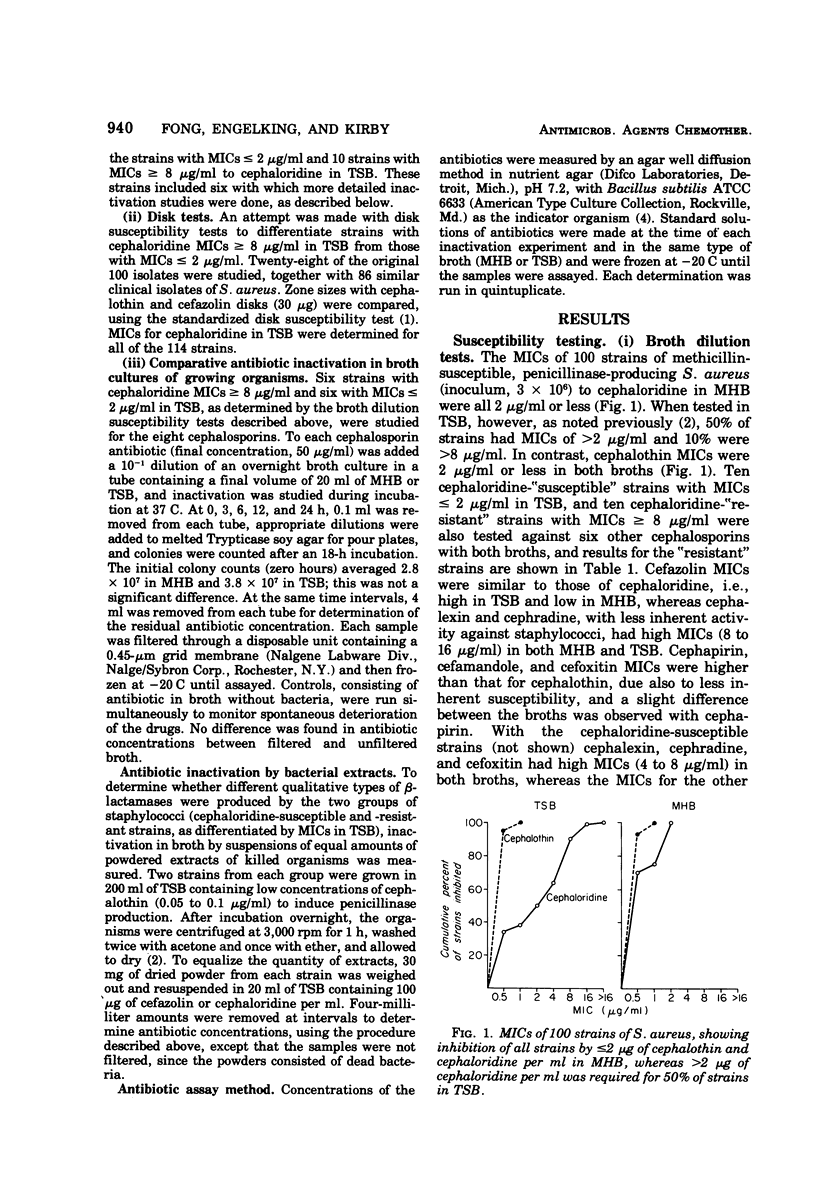
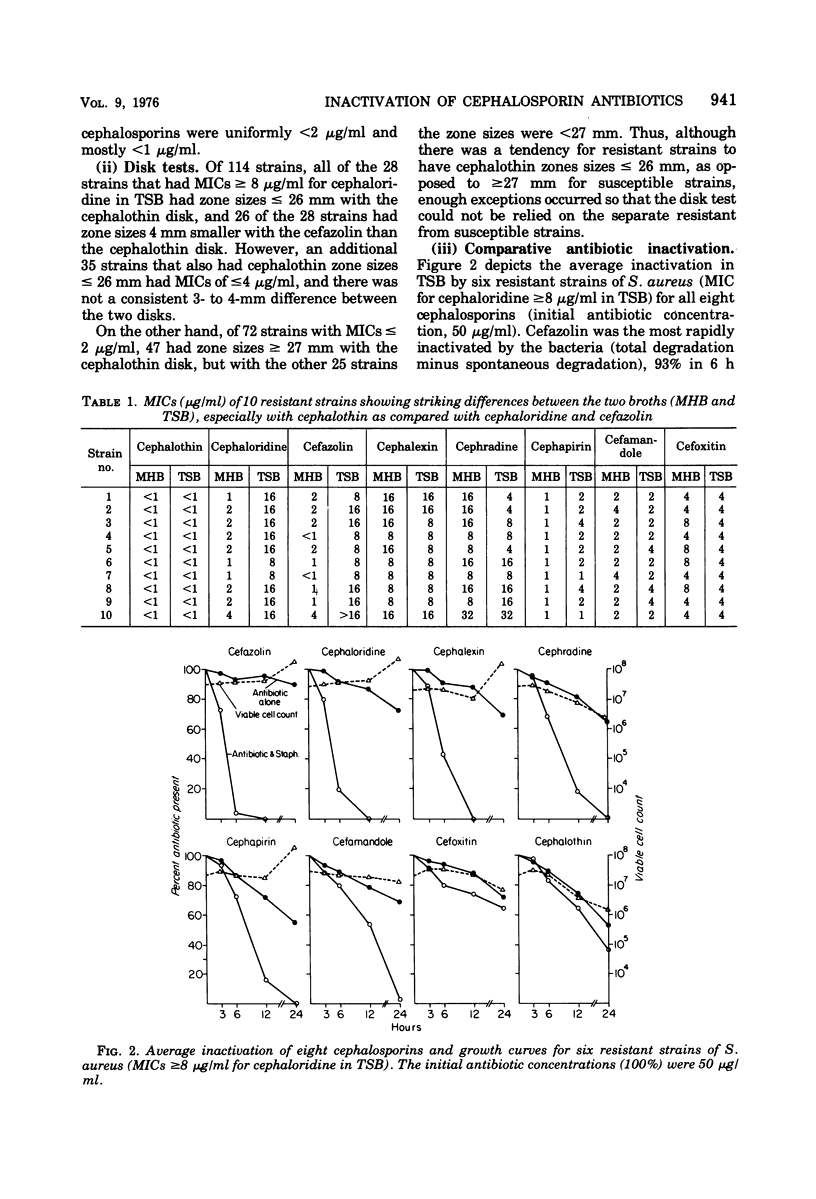
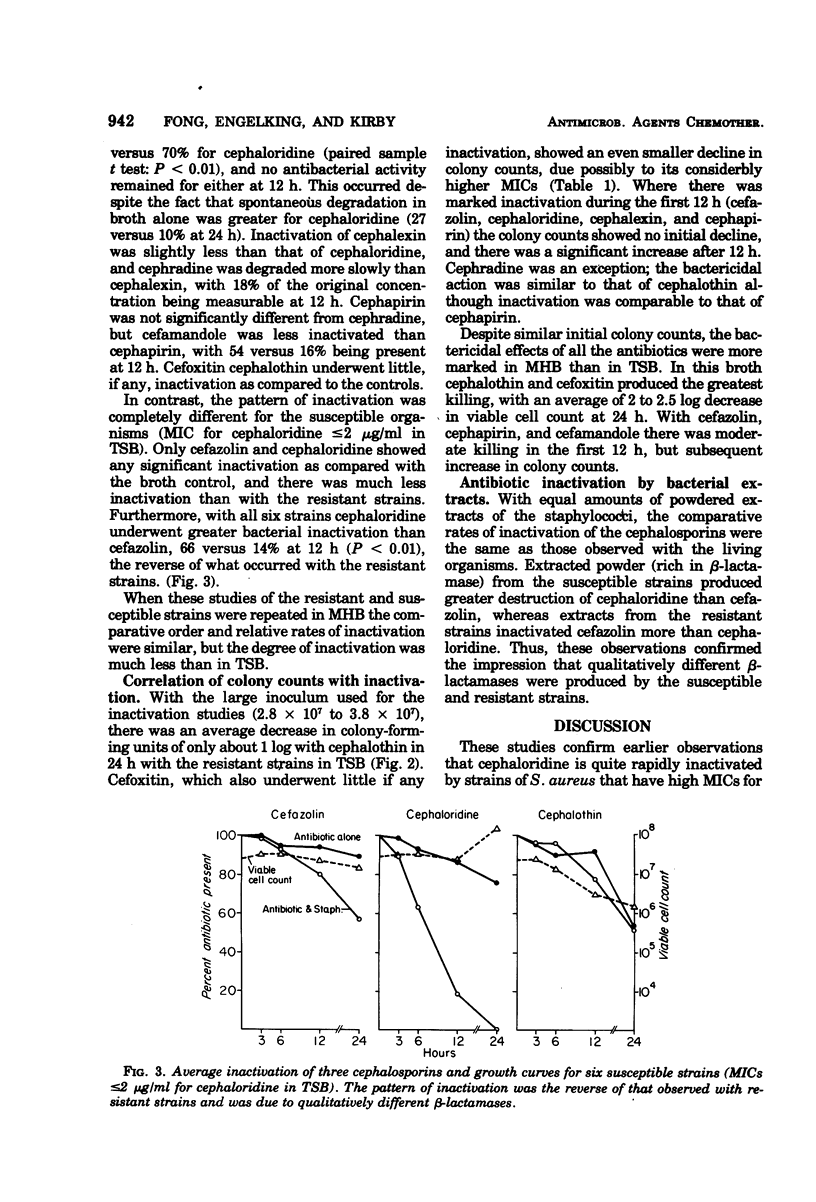
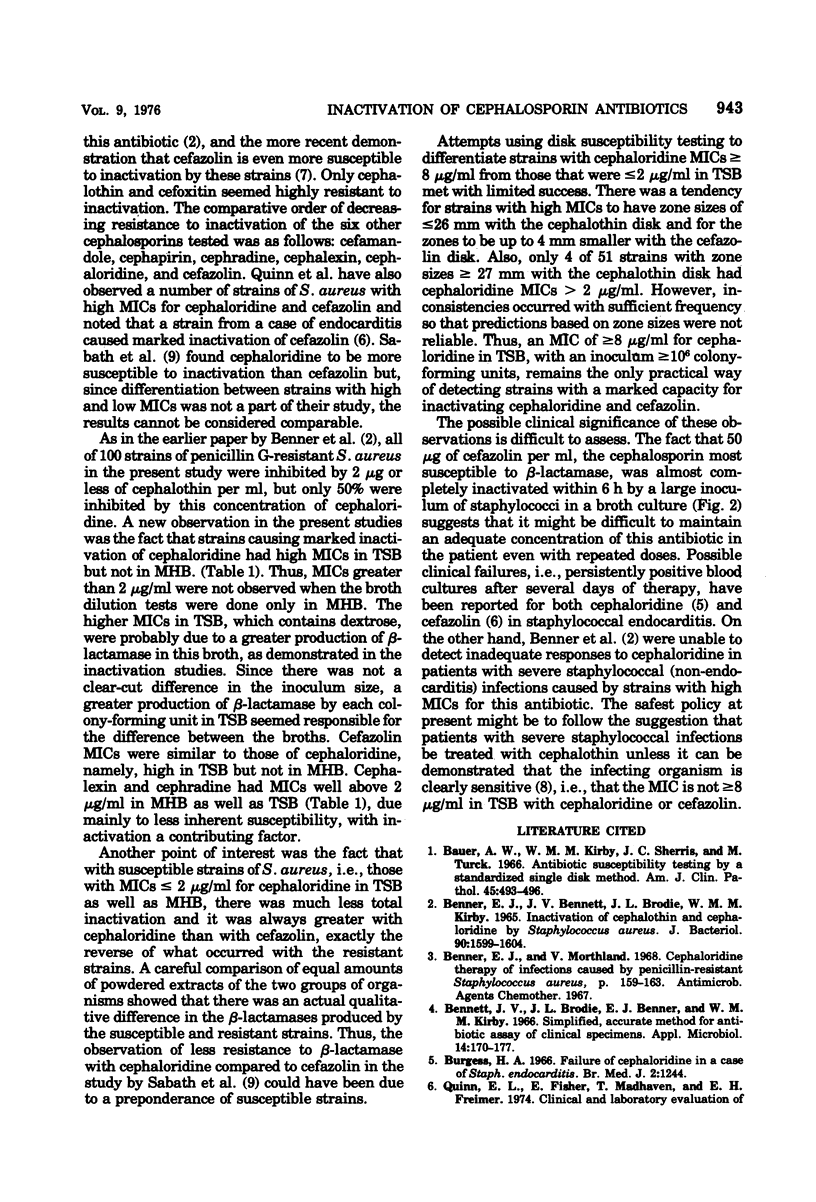
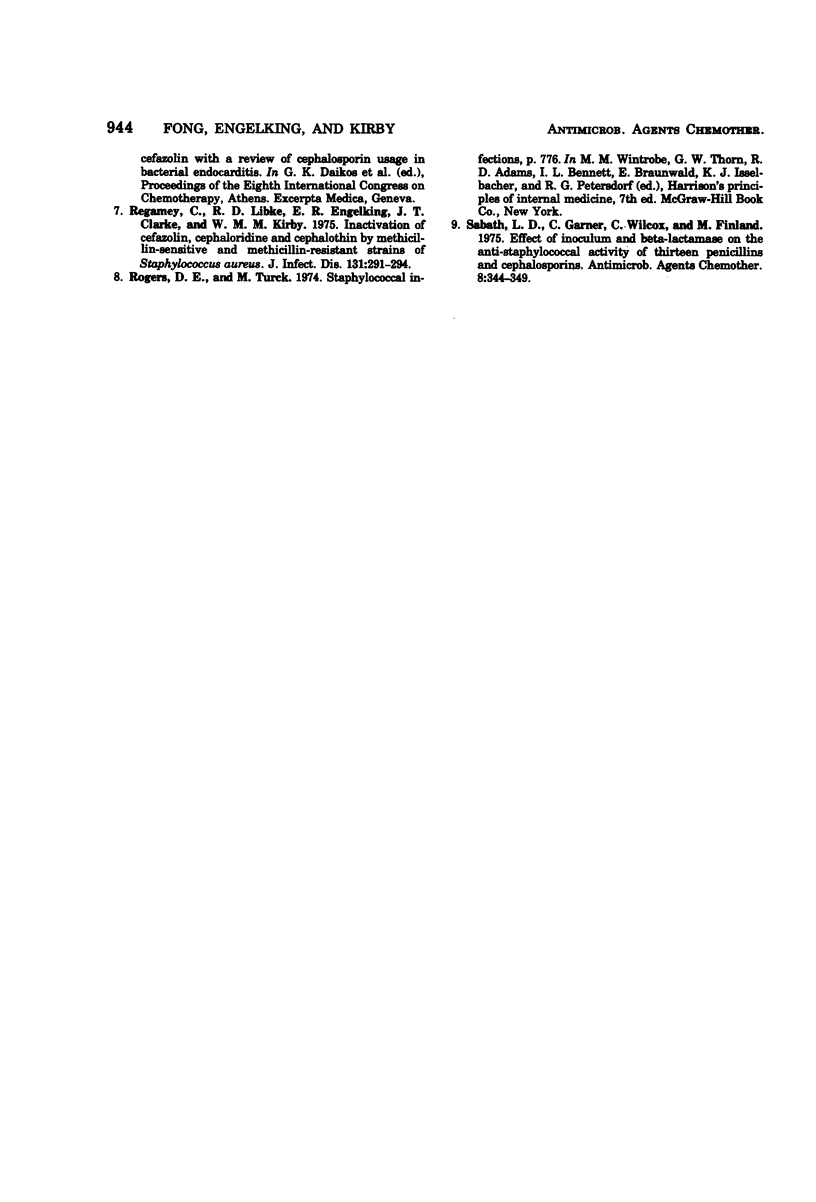
Selected References
These references are in PubMed. This may not be the complete list of references from this article.
- Bauer A. W., Kirby W. M., Sherris J. C., Turck M. Antibiotic susceptibility testing by a standardized single disk method. Am J Clin Pathol. 1966 Apr;45(4):493–496. [PubMed] [Google Scholar]
- Benner E. J., Bennett J. V., Brodie J. L., Kirby W. M. Inactivation of cephalothin and cephaloridine by Staphylococcus aureus. J Bacteriol. 1965 Dec;90(6):1599–1604. doi: 10.1128/jb.90.6.1599-1604.1965. [DOI] [PMC free article] [PubMed] [Google Scholar]
- Bennett J. V., Brodie J. L., Benner E. J., Kirby W. M. Simplified, accurate method for antibiotic assay of clinical specimens. Appl Microbiol. 1966 Mar;14(2):170–177. doi: 10.1128/am.14.2.170-177.1966. [DOI] [PMC free article] [PubMed] [Google Scholar]
- Burgess H. A., Evans R. J. Failure of cephaloridine in a case of staphylococcal endocarditis. Br Med J. 1966 Nov 19;2(5524):1244–1244. doi: 10.1136/bmj.2.5524.1244. [DOI] [PMC free article] [PubMed] [Google Scholar]
- Regamey C., Libke R. D., Engelking E. R., Clarke J. T., Kirby M. M. Inactivation of cefazolin, cephaloridine, and cephalothin by methicillin-sensitive and methicillin-resistant strains of Staphylococcus aureus. J Infect Dis. 1975 Mar;131(3):291–294. doi: 10.1093/infdis/131.3.291. [DOI] [PubMed] [Google Scholar]
- Sabath L. D., Garner C., Wilcox C., Finland M. Effect of inoculum and of beta-lactamase on the anti-staphylococcal activity of thirteen penicillins and cephalosporins. Antimicrob Agents Chemother. 1975 Sep;8(3):344–349. doi: 10.1128/aac.8.3.344. [DOI] [PMC free article] [PubMed] [Google Scholar]


